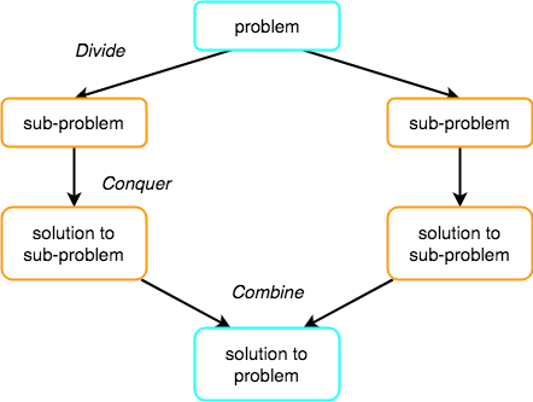Divide & Conquer
We can choose from a wide range of algorithm design techniques
- For insertion sort, we used an incremental approach
- having sorted the subarray A[1 .. j-1], we inserted the single element A[j] into its proper place, yielding the sorted subarray A[1 .. j]
- For insertion sort, we used an incremental approach
an alternative design approach, known as
divide-and-conquer- We use divide-and-conquer to design a sorting algorithm
- whose worst-case running time is much less than that of insertion sort
- One advantage of divide-and-conquer algorithms is that their running times are often easily determined
- We use divide-and-conquer to design a sorting algorithm
Many useful algorithms are recursive in structure
- to solve a given problem, they call themselves recursively one or more times to deal with closely related sub-problems
- These algorithms typically follow a divide-and-conquer approach
- they break the problem into several subproblems that are similar to the original problem but smaller
- solve the subproblems recursively
- then combine these solutions to create a solution to the original problem

algorithm
The divide-and-conquer paradigm involves 3 steps at each level of the recursion
Dividethe problem into a number of subproblems that are smaller instances of the same problemConquerthe subproblems by solving them recursively- If the subproblem sizes are small enough, however, just solve the subproblems in a straightforward manner
Combinethe solutions to the subproblems into the solution for the original problem
another method of explanation
- Divide problem into several smaller subproblems
- normally, the subproblems are similar to the original
- Conquer the subproblems by solving them recursively
- base case: solve small enough problems by brute force
- Combine the solutions to get a solution to the subproblems
- and finally a solution to the original problem
- Divide and Conquer algorithms are normally recursive
- Divide problem into several smaller subproblems